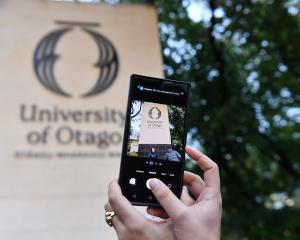It might be time we got around to looking at how we get around.
From a young age we build up mobility-based competencies; we learn to crawl, then walk, ride a bike or skateboard, then drive a car. Alongside these competencies, we learn how to move with the aid of other people; as a passenger in a car, catching a bus, calling a taxi. Moving from place to place is central to how we conduct our lives. In order to move, we make choices on the mode of transport we take.
These choices are constrained by a range of things; money, time, access, purpose of travel, geography. Not everyone can walk to work or catch a bus to the shops. But sometimes we have to trade off different modes to decide how we will travel. Often, driving a car prevails.
Yet our current, dominant mode of transport, the private car, does not seem to be working as well as it used to; globally we are seeing evidence of overstretched or ''saturated'' transport infrastructure. Congested roads are a source of frustration for travellers and often used to justify funding regimes biased towards road-based modes. This leaves public transport (and active transport infrastructure) underfunded, outdated and insufficient for meeting the public's mobility demands, leading to greater dependence on private car travel.
But recent data suggests car use has peaked. The kilometres travelled per vehicle is levelling or declining in many developed countries, and this is particularly noticeable among younger age groups. So why does this matter?Mobility, and access to transport, is vital. But how we choose to travel, be it by car, bike or bus, has environmental, economic, health and socio-cultural implications.
Sustainable transport has become a popular concept, but what does it mean in reality? Meeting the transport needs of the current generation without compromising the ability of future generations to meet their needs? A transportation system where beneficiaries pay the full social and economic costs? If so, then a sustainable transportation system should meet the needs of the public while ensuring intergenerational equity, and offer a choice of transport modes that are affordable, efficient and safe.
The current transport system does not seem to be reaching these standards. For example, transport-related carbon emissions account for 20% of New Zealand's total greenhouse gas (GHG) emissions each year, most of which come from private vehicles. The latest Intergovernmental Panel on Climate Change (IPCC) Mitigation report found transport growth is outweighing mitigation efforts, and therefore reducing these carbon emissions presents a serious challenge. Research has also indicated that cases of wide-ranging health issues could be reduced through increased physical activity. The uptake of active transport has been seen to have particularly positive effects on cardiovascular disease and obesity.
Active transport modes can provide exercise and movement in an increasingly sedentary world. With this in mind, I think we need more conversations about how we travel, but more importantly, about how we want to travel. These conversations need to exist at all levels; from coffee shops and hairdressers to local council to national government. If we're not happy with what we currently have, then we need to think about what we want, and from there, maybe we can force change.
- Dr Debbie Hopkins is a postdoctoral research fellow at the University of Otago Centre for Sustainability. Each week in this column one of a team of writers will address issues of sustainability.













